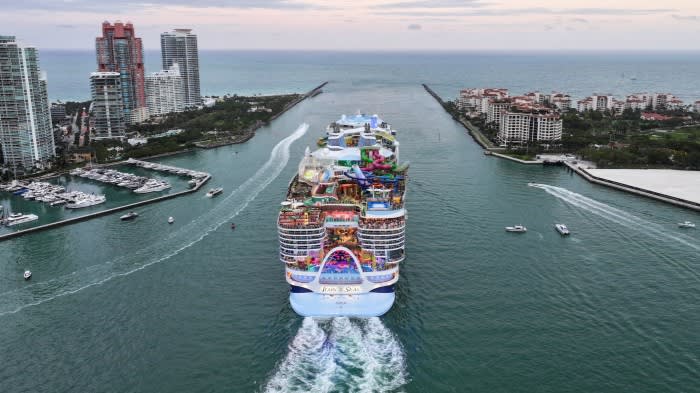Unlock the Editor’s Digest for free
Roula Khalaf, Editor of the FT, selects her favourite stories in this weekly newsletter.
Americans’ love of the high seas knows no bounds. Even as wider travel spending cools following a blockbuster 2023, demand for cruise holidays is sailing strong.
That has been a boon for Carnival, Royal Caribbean and Norwegian Cruise Line. All three cruise operators have recently reported record booking volumes and raised full-year guidance.
But consumers’ enthusiasm to climb aboard city-sized floating resorts has not been matched by investor appetite. Of the three, only the share price of Royal Caribbean has managed to surpass its pre-pandemic high. Carnival and Norwegian are trading at more than 60 per cent below their February 2020 levels.
High debt levels are to blame. Cruise operators had to borrow heavily during lockdowns. That is on top of issuing dilutive equity at cheap prices. Carnival, which increased its borrowings by almost $20bn between 2019 and 2022, ended its fiscal 2023 year with a net debt to ebitda ratio of 6.7 times. Before the pandemic, the ratio was 2 times. At Norwegian, the metric more than doubled to 7.4 times during the period.
Royal Caribbean is the least leveraged of the three, with a net debt to ebitda of 4.7 times at the end of 2023. Debt makes up about a third of its enterprise value compared with 60 per cent and 66 per cent at Carnival and Norwegian, respectively.

Cruise operators deserve some credit for the progress they have made in deleveraging. Strong global demand means companies should be able to pay off their debt pile at a quicker pace and save on interest expenses. Carnival, for example, expects its net debt to ebitda ratio to fall to 4.5 per cent this year.
The wind is blowing in their favour. Globally, the number of cruise passengers hit 31.7mn last year, surpassing the pre-pandemic level by 7 per cent, according to the Cruise Lines International Association. That number is forecast to hit almost 40mn by 2027.
Few cruise operators placed orders for new boats during the pandemic, limiting capacity growth. As a result, operators have been able to raise ticket prices. Net yield, or the revenue per passenger per cruise day, excluding costs, is expected to increase by 10.25 per cent at Carnival.
Meanwhile, fuel prices — one of the biggest expenses for any cruise line — have continued to fall. All this ensures free cash flow will continue to grow. The enterprise value will shift towards equity holders again. Now is a good time for investors to get on board.


